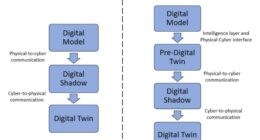Inflation Explained

What is inflation? To really understand inflation, you need to know what money is and why we use it. Money represents the value of hard work and producing things that other people want to use. The measurement of this production or hard work is done with units of money.

If I spend $20 to buy a can opener, that $20 represents an hour of work serving food at a restaurant as an example. You can see this by looking at a job that pays wages by the hour, and then taking those wages and buying things that you do not produce to obtain all of the things that you need to live. The backbone of this idea is exchanging and trading goods, because making everything you need by yourself may not be possible.
Explaining Inflation
What exactly is inflation? To truly comprehend inflation, you must first understand what money is and why we use it. Money reflects the worth of hard effort and the creation of items that others wish to utilize. Units of money are used to quantify this output or hard effort.
For example, if I spend $20 on a can opener, that $20 represents an hour of effort serving food in a restaurant. Consider a job that pays by the hour and then using those wages to buy things that you do not generate in order to attain all of the necessities of life. Because exchanging and trading products is the foundation of this concept,
People make the notion that $20 today equals $20 tomorrow. It is not, in fact. Things’ pricing are continuously changing, and the worth of this $20 depends on when you use it and what you buy with it. Do you want proof? Examine the price of food, gasoline, education, rent, utilities, and a variety of other household products and services over time.
Prices for most products are rising most of the time, and $20 buys less and less each year. To provide a stark contrast, in 1920, $20 got you a suit, a belt, and a new pair of shoes. Today, $20 might only get you a belt. Inflation occurs when prices rise and more money is required.
Inflation is also defined as the rate at which the prices are increasing, and the rate at which the value of the dollar is falling. What can you do about it? Back in the 1970s and 1980s, you would get raises at your job each year that were at least equal to the rate of inflation or the rate at which the value of the dollar was falling. This allowed you to buy the same things for the same amount of work that you were doing. As an example, if you made $20 per hour in 1970, you can purchase 5 litres of milk for $20. In the following year, the price of milk increased to $21, and your wage would increase to $21 and you can buy the same amount of milk for an hour of labour. If you are an investor, you would park money in a bank account with an interest rate that was the same or higher than inflation so that you can buy the same or more goods with the capital you had invested. If you were a landlord, you would increase your rent by 5% to counteract the increase in your expenses of 5% such that your rental property would create the same amount of profit
in spite of inflation.








